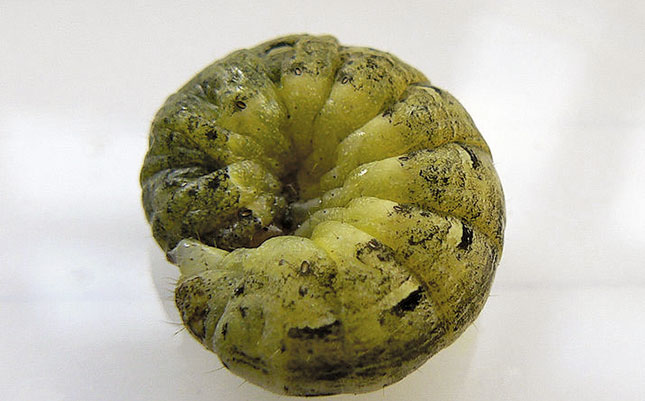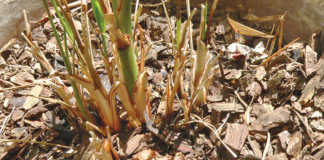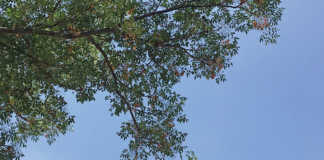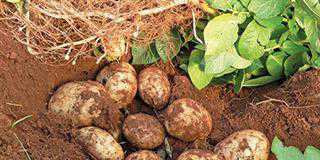
Photo: Neil Phillips
Downy mildew: Young leaves turn downwards at the edges. A grey fungus growth is visible on the underside of the leaves. The infected parts turn brown later.
Control: The disease is seed-borne – use good quality seed. Don’t overwater. Plant in well-drained soils. Control weeds. Don’t plant with too-narrow spacing.
READ Bacterial blight of cowpeas
Root rot, damping-off: Germination is poor, the young seedlings grow poorly, turn yellow, wilt, topple over and die. The roots are rotten and turn black. The disease can be severe in compacted soils.
Control: Don’t overwater. Plant only in soil with good drainage. Treat the seed with thiram. Practise crop rotation. Make sure the crop does not lack boron. Plant at the right time and not too deep.
Cutworm: Grey/brown to black worms that feed on the portion of the stem directly above ground level, resulting in toppling over of recently transplanted young seedlings.
Control: Keep the land free from weeds for about six weeks before planting. Apply commercial cutworm bait around seedling stems.













